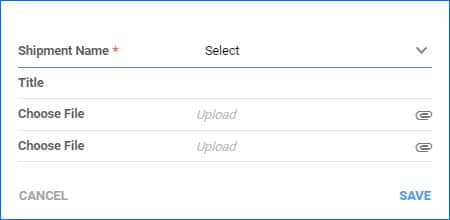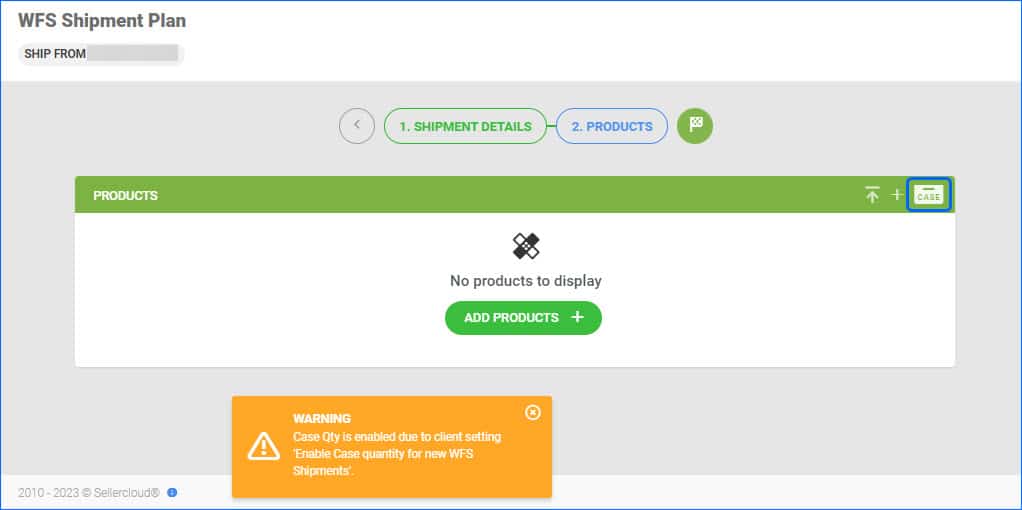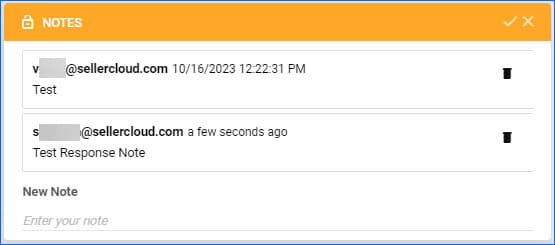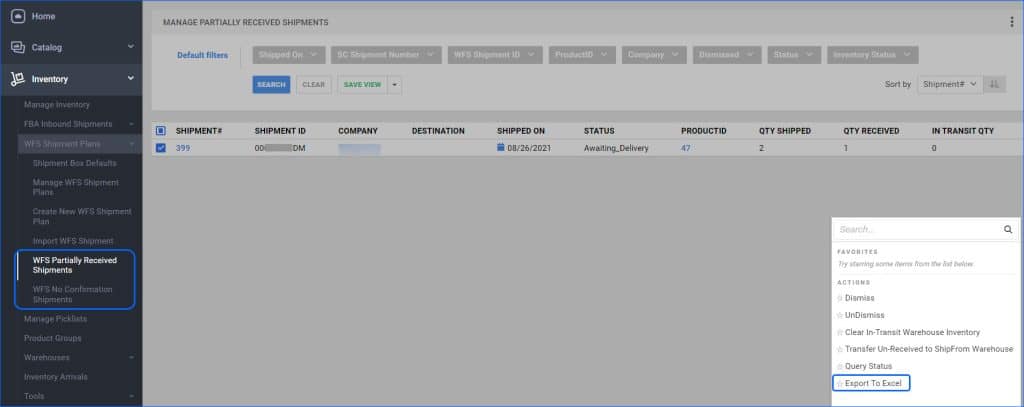We have added a new page in the WFS Shipment Plan Toolbox. You can now see a Manage Documents tab, where you can upload any relevant files for your own internal recordkeeping, such as PDFs or images.
Query Shipment Status from Amazon Restriction
We have added a safeguard when querying the status of FBA Inbound Shipments, which will prevent the shipment status from being changed to Shipped or greater unless all units have been fully picked within Sellercloud. Even if the Shipment is already Received in Seller Central, updating the status in Sellercloud before picking means you will not be able to pick any more units, and the received quantity will be deducted from the Picking Bin, leading to negative quantities. These will cause inventory discrepancies for your SKUs and in your bins. The added safeguard applies both for the automatic Shipment Status Query and the manual option in the Actions menu.
Ship From Address Change in FBA Inbound Shipments
Going forward, when you click Edit on the FBA Inbound Shipment details page, you will see a new checkbox underneath the Ship From Warehouse field. Check Update Ship From Address To Warehouse Address to ensure that the ship from address changes along with the warehouse. We have added this new option to make editing warehouse information more streamlined and prevent potential mistakes.
WFS Products Inconcistencies
You can now see a report showing discrepancies between your Sellercloud SKUs and Walmart Marketplace Active Listings. You can go to your Company, open the Toolbox, and click on WFS/Seller-Fulfilled Discrepancies to see which of your items are not consistently set up as WFS enabled in both Walmart and Sellercloud. This report can really help identify and fix discrepancies in your WFS products. 
Enable Case Quantity for New WFS Shipment Plans
We have created a new Client Setting called Enable case quantity for new WFS Shipments. When enabled, Sellercloud will automatically enable the Case Quantity mode for each new WFS Shipment Plan you create in Sellercloud. This setting is meant to help you streamline the process of restocking your WFS items and prevent mistakes.
Inventory Transfer Log
We have added a new page called Inventory Transfer Log. There, you can keep track of Warehouse Inventory Transfers, which SKUs were moved, the Ship From and Ship to Warehouses, as well as when and who created the movement. We have included a filter for each grid column so you can easily focus the data to find the information you need.
BigCommerce Locations
Our BigCommerce Integration now supports Locations. You can now download your BigCommerce Locations and map them to your Sellercloud warehouses directly from the Delta Interface. This will give you better control over how your inventory is allocated and updated on your website.
Warehouse Inventory Transfer Notes
We have added the ability to create internal notes for Warehouse Inventory Transfers. You can add a note at any point in the process, and it will be visible to anyone who has the necessary permissions to view transfers. This can be a great help in coordinating employees in different warehouses and a way to have accessible records when moving inventory.
Predictive Restocking Level Two and Blackout Days
We have rolled out our Enhanced Predictive Restocking for FBA Report. In addition to our standard Predictive Restocking for FBA report, you will now be able to see a comprehensive Sales Graph, that displays the daily sales for the past 365 days. You can see number of orders, sales trends over time, as well as average sales velocity. Additionally, we have added a Blackout Days feature that allows you to exclude specific days, entire date ranges, or sale quantities that are above or below specific numbers from the calculation. For example, if there was a sales spike or there were no sales, you can exclude these days so they don’t skew your restocking numbers.
Export Partially Shipped and No Confirmation WFS Shipment Plans
We have added the option for Export to Excel single or multiple records from the WFS Partially Received Shipment and the WFS No Confirmation Shipments pages. 